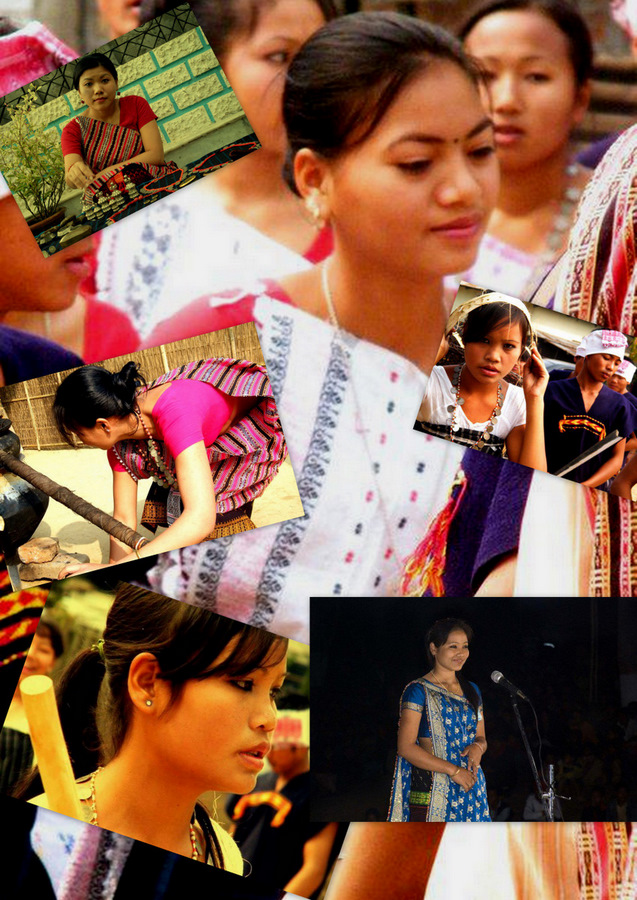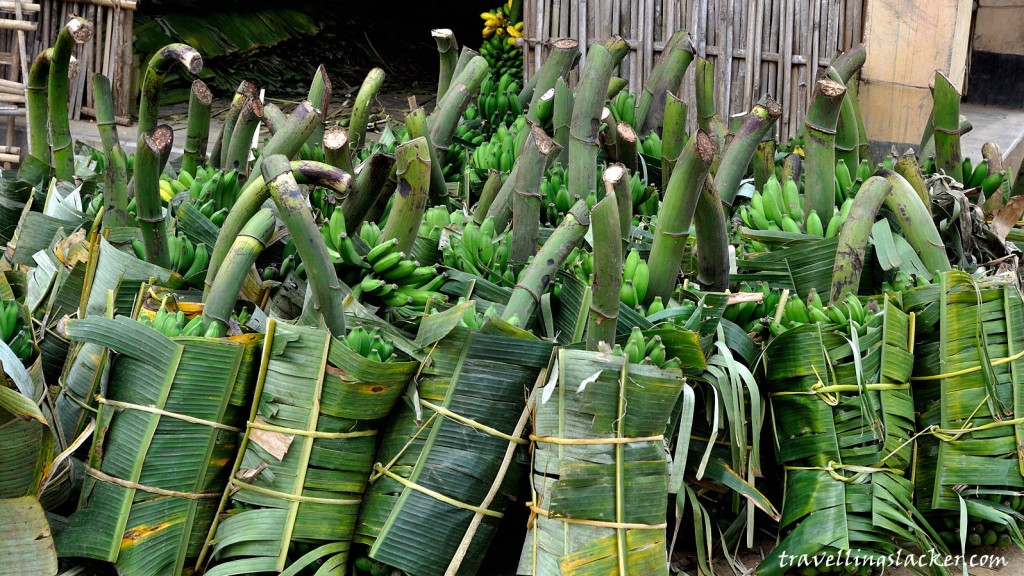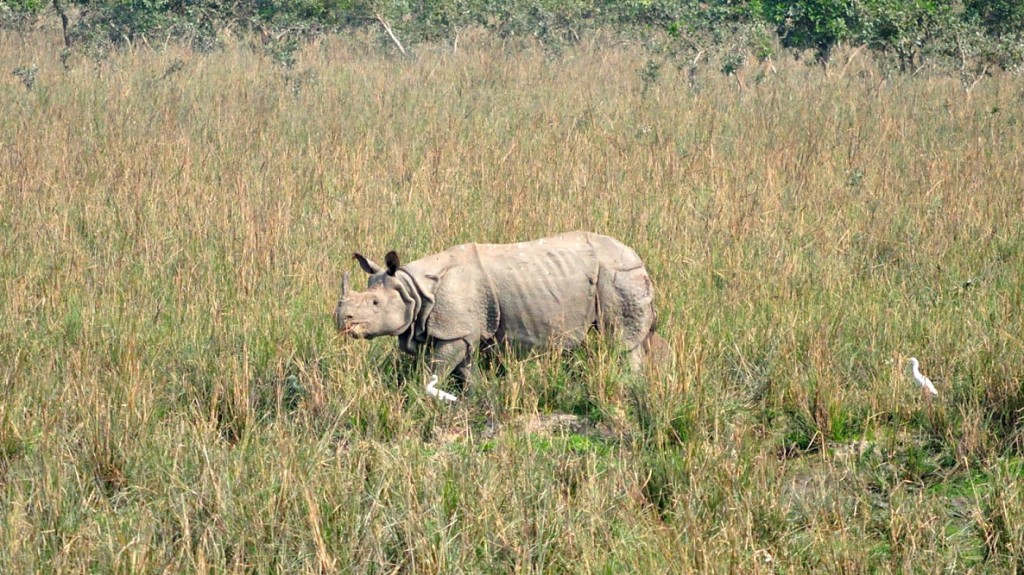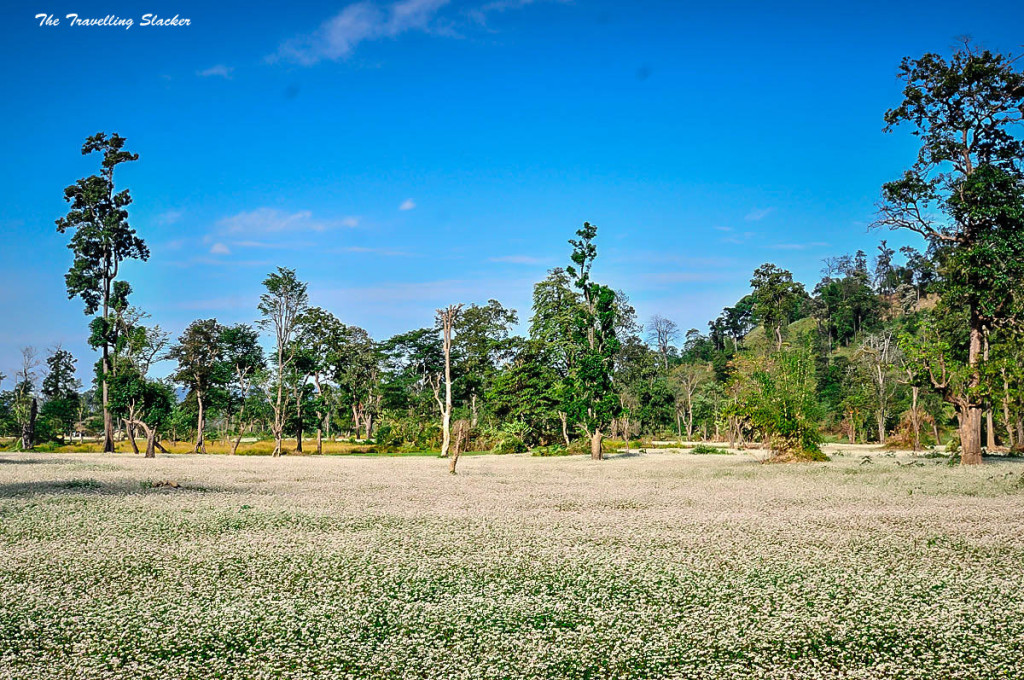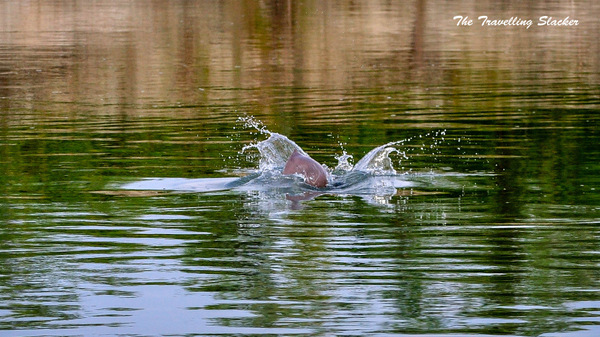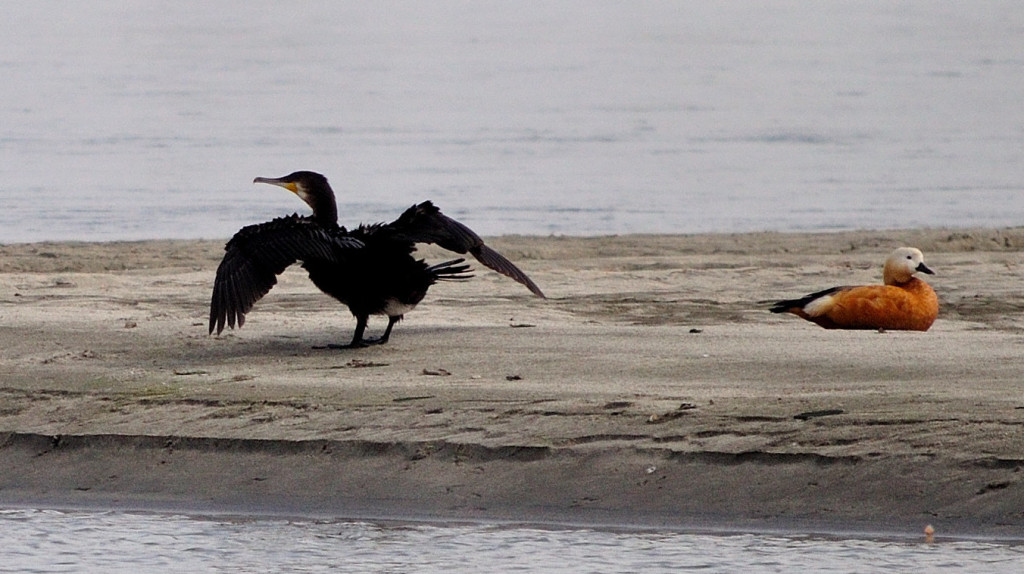Although not many will be able to locate Dehing Patkai National Park (DPNP) on a map, it’d been on my radar for a while. It only became a national park in 2020 but I’ve been hearing about it for almost two decades.
I have been travelling around this region for a while now, without actually entering the national park. I considered it back in 2013 while visiting Namdapha. However, limited information and facilities were available back then. This whole region in the Eastern corner of Assam has great potential with dense rainforests, colourful ethnic groups, and some very interesting colonial history related to the origin of Assam’s tea, oil, and coal trade. I’ll discuss more about them in a different post about Digboi. I have already included this area in my list of Most Unexplored Places of India that I made a few years ago. Do check that post for travel goals.
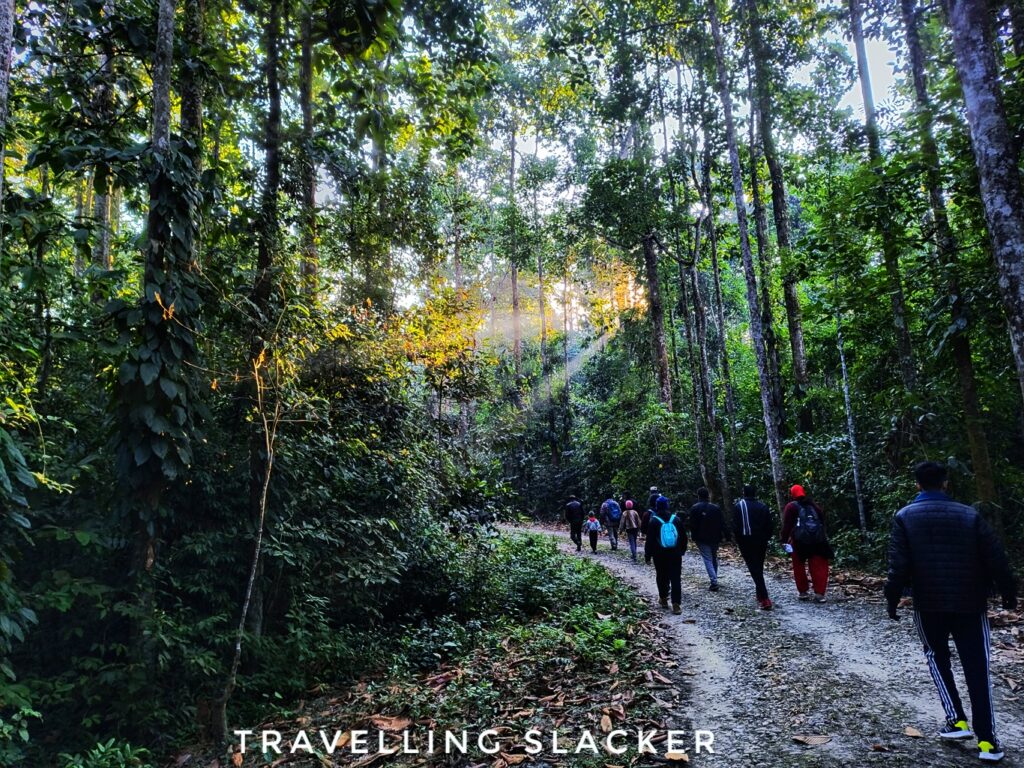
So, I was in Digboi as a part of Padadhwani Fest, an event to cherish and promote Digboi and surrounding areas. The previous two days had also involved a lot of travelling, long walks and an event at night and I had managed to return to my hotel only at midnight (more about them in a different post). Dehing Patkai’s visit was also a part of these festivities. I still got up at around 4.30 AM against the wishes of my aching muscles and was picked up at 5 AM from my hotel.
We waited at a designated point for some more people to arrive and eventually, the bus started by 6 AM and reached the gate at around 6.45 AM.
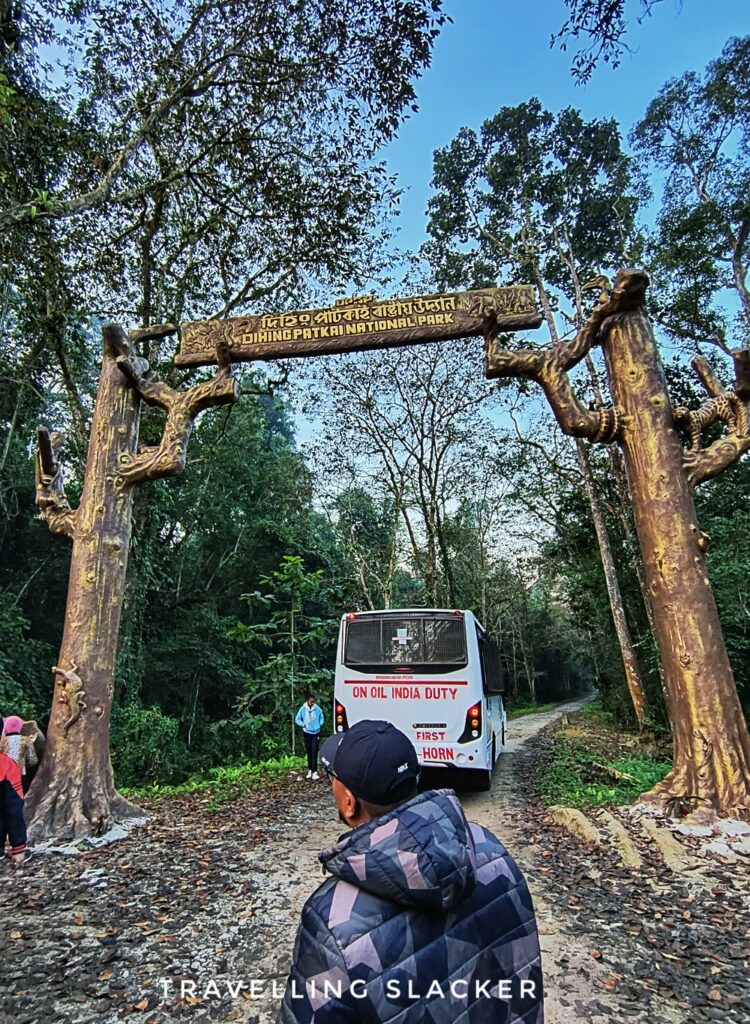
This entry point is called Soraipung, around 20 km from the town. “Sorai” literally means bird in Assamese and this area seemed like a birding heaven with tall trees surrounding a small ground from three sides. We finished the formalities and we could see only one narrow pathway going straight into the jungle. It was so dense that it was hard to see too far beyond a few feet but the sun was up and piercing through the canopy, offering some good frames.
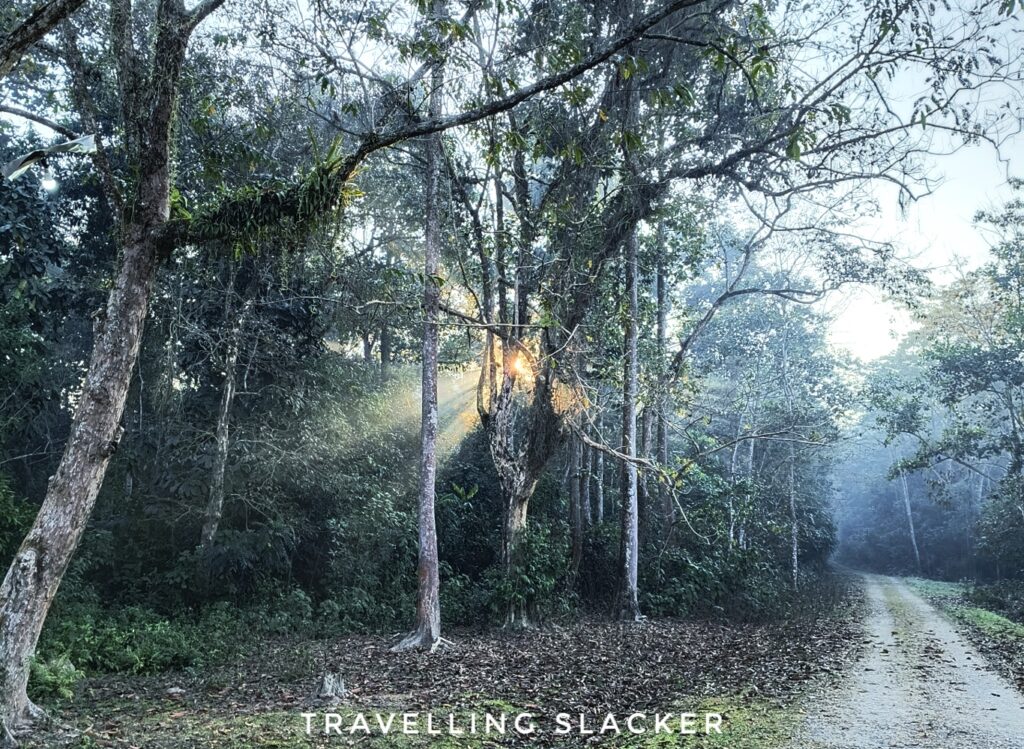
We started moving with our local guides and forest guards. These are genuine rainforests that get even denser as you move along. In some corners, even sunlight fails to enter. The only trees that rise above the canopy are usually the hollong trees. Now, there are a few interesting factoids about hollong trees. Firstly, they are the state trees of both Assam and Arunachal, secondly, they are an important part of the habitat of hoolock gibbons (notice the similarity in the names, both the English names have been derived from Assamese names).
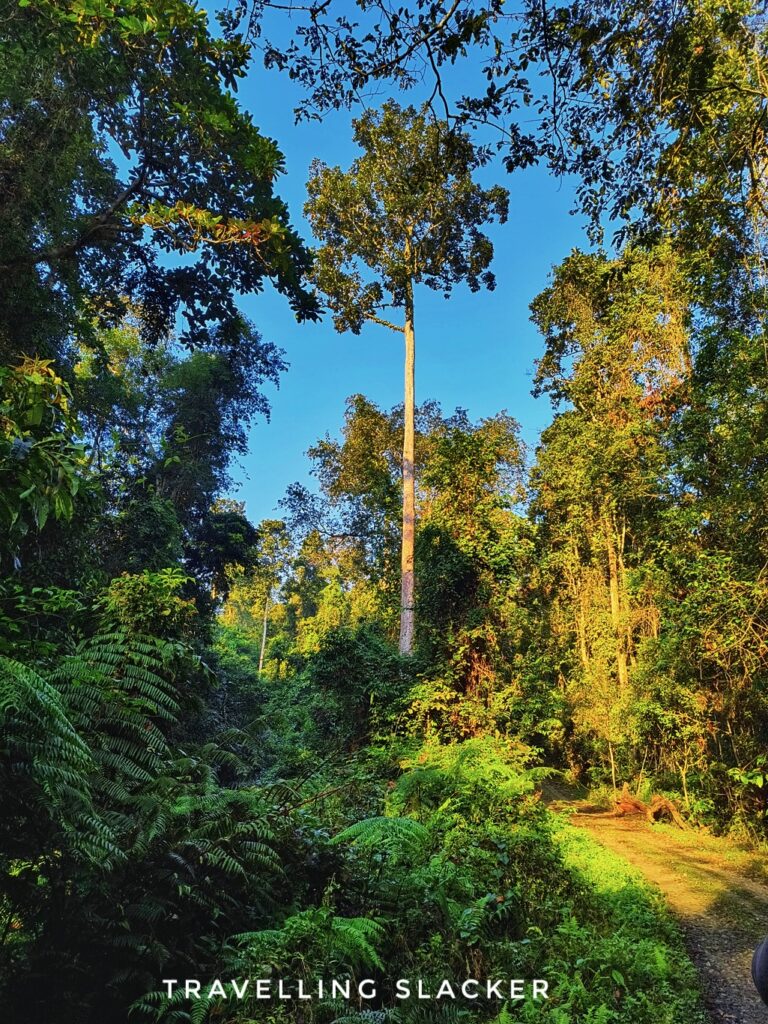
Another interesting thing about these trees is the big helicopter seeds. They look like two giant wings and can rotate and fly away in the wind, especially when they fall from such a height. This helps the seeds spread far and wide. I picked up one of them and tried to shoot a video by throwing them in the air but it failed. I’ll do it from a higher platform next time.
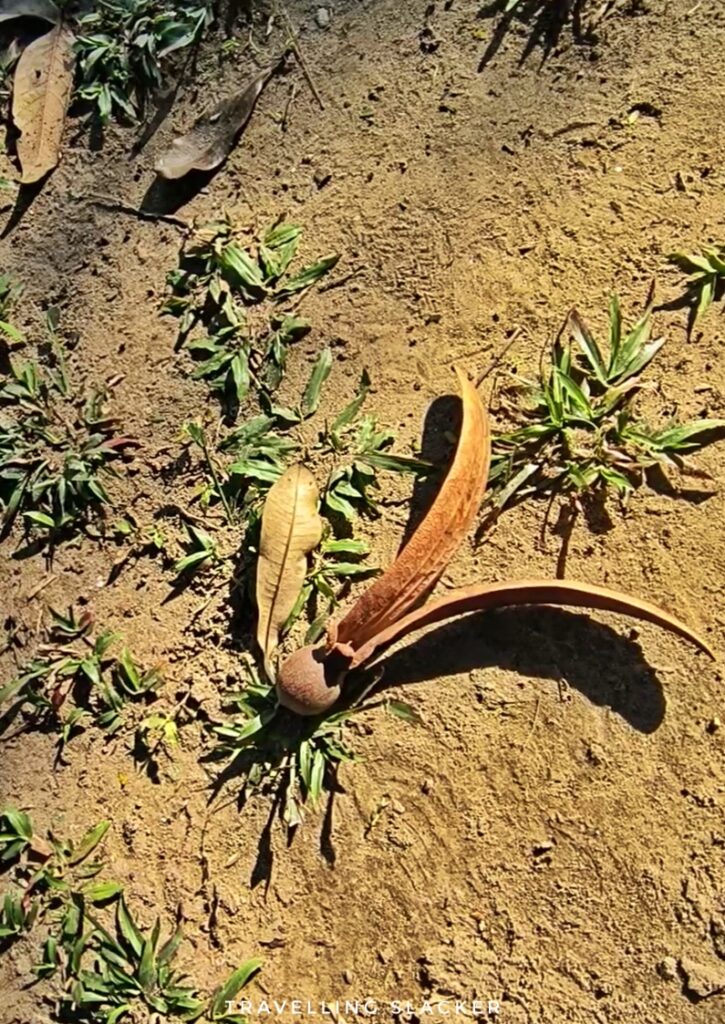
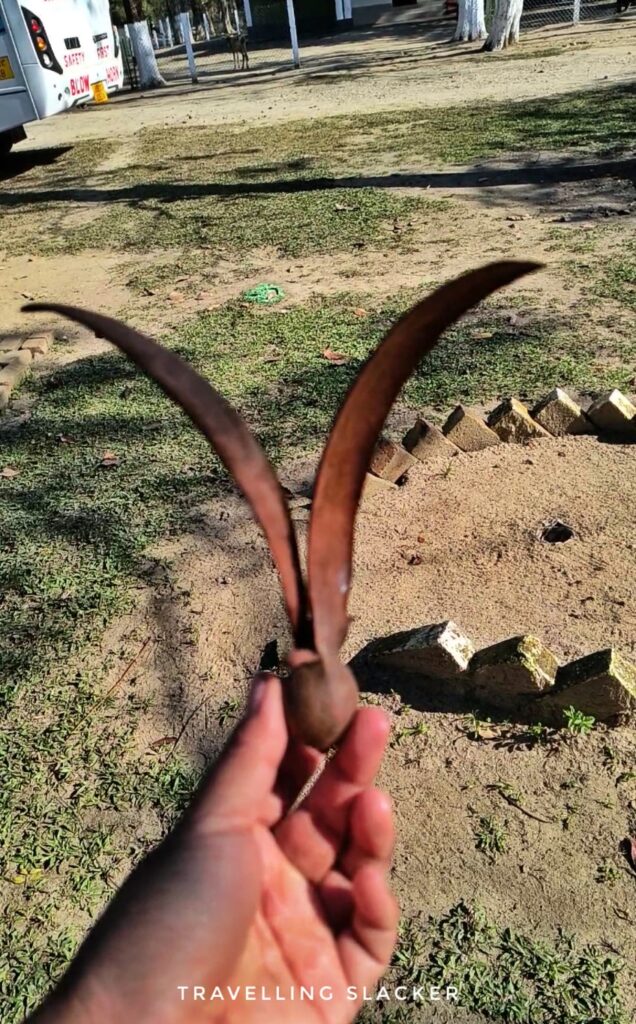
Anyway, we continued the walk and we could hear some loud wails from a distance. The news was that a big herd of wild elephants have been visiting this stretch and they were not far. We had been asked to be careful and could see certain pathways through the jungle that should be elephant corridors.
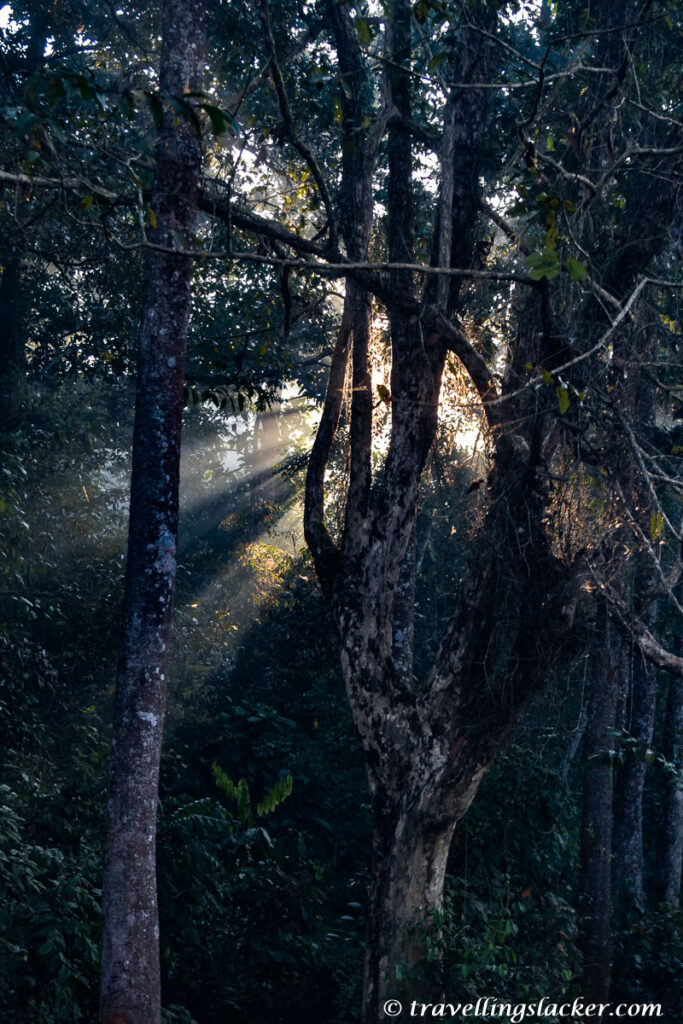
Eventually, after around an hour, we reached the camp, which was our destination for the day. We’d been told that a group of gibbons had been camping in that area and I was hopeful of a few gibbon images. Unfortunately, we were a bit late and also, we were a pretty large group of people who had gathered due to the festival.
Anyway, there are many birds nearby. Throughout the walk, I could hear them but even when I saw them, the angle was against the sun, offering only silhouettes. Finally, I spotted one bird at a distance. It was a very small bird with Black and white stripes and I struggled to get a clean shot. I followed one for a few minutes but it kept moving and the results remained disappointing but it looks like a black-backed forktail.
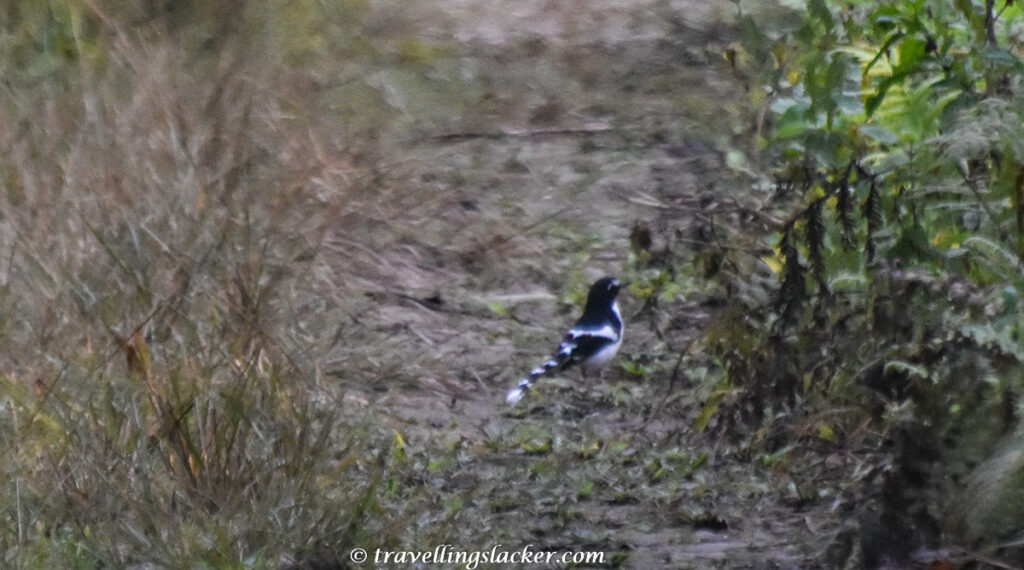
I decided to give it another try and took a different route. We were not supposed to go too far leaving the guides so my options were limited. But I noticed a spot where a large tree had risen above the canopy, offering clear views and the sunlight was falling on it at a convenient angle. I waited underneath that tree and was rewarded within a few seconds with a bright yellow bird. It was still a tiny bird to capture from a distance but this time the pics were better than the previous one. (It has been pointed out by readers that it is a golden oriole)
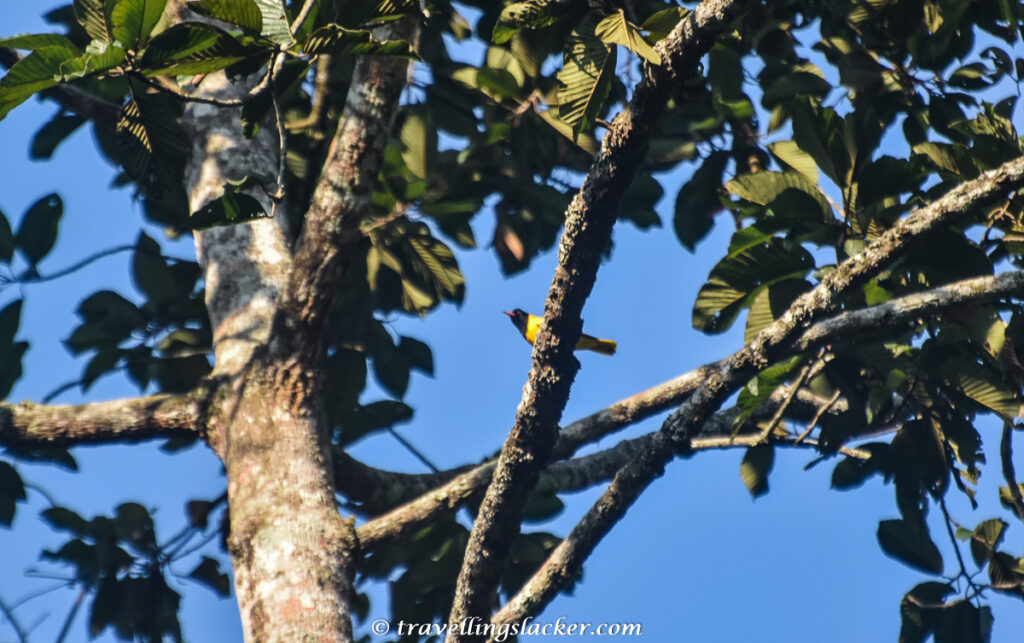
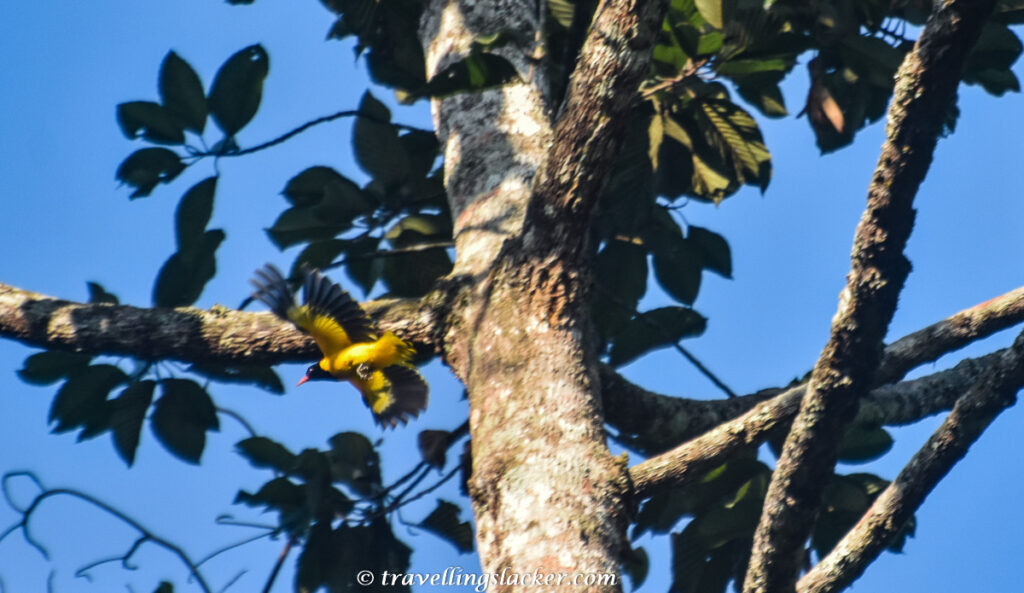
We spent around half an hour and then started heading back. The elephant herd was still audible but their noise was soon drowned by cacophonous screeching of hollock gibbons. It is hard to say why they were making such a scene. It could be something to do with elephants or two alpha males taking on each other. We still couldn’t see any of them so maybe they were doing it purposefully to mock the humans.
Nevertheless, when we stopped hoping for gibbons, we were rewarded by the birds. A red mist rose from a tree as dozens of scarlet minvets started swirling over our heads. Some of them remain in the tree and this was another chance to click them. Minivets are very small birds that are not easy to catch. At the same time, I could also see a few yellows among them. Female scarlet minivets are yellow while the male ones are, well, scarlet. The species is named after the colour of the males, which should bother the feminists. I tried hard and eventually got a few not very clear but passable clicks of them.
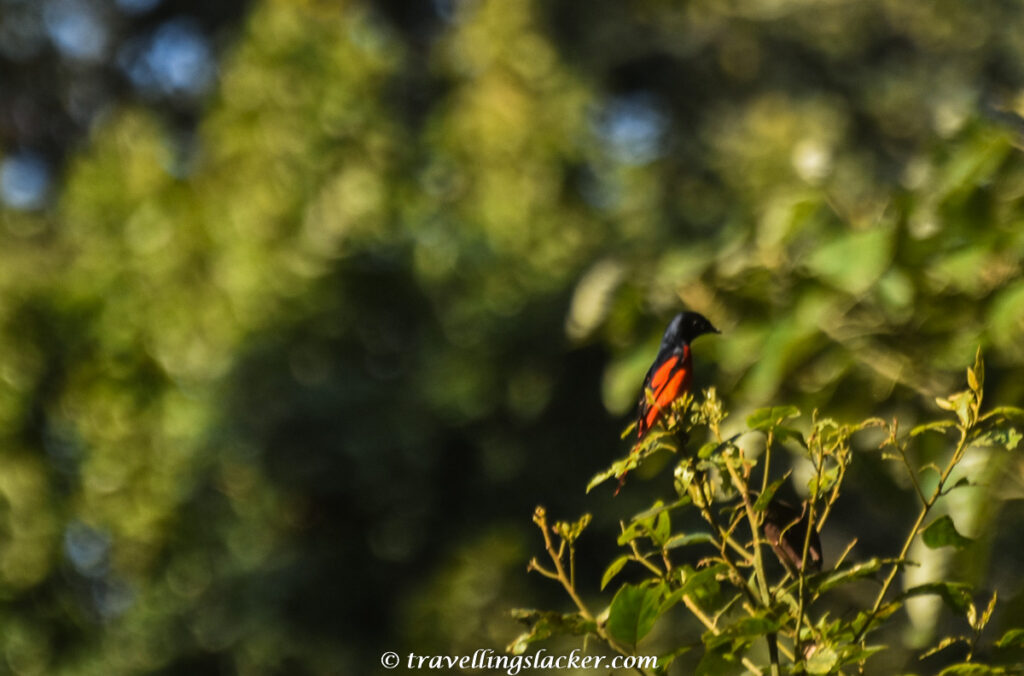
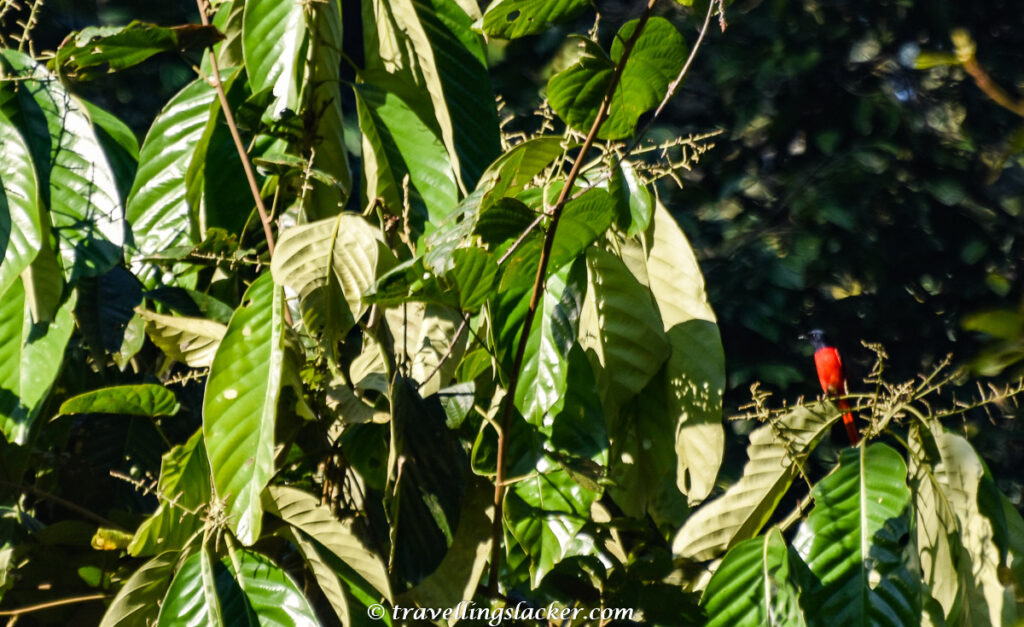
After this, we wrapped up the walk quickly but not before we got a pep talk from Devaji Moran, who is a local activist who’d also accompanied us during the hike. This is where people need to know more about Dehing Patkai. You’d be alarmed to know that it took a huge effort and decades of work by the local activists and NGOs to get these jungles declared as a National Park. It became a wildlife sanctuary as late as 2004 and a national park only in 2020 during the pandemic years. While the designated national park has an area of 231.65 km2 (89.44 sq mi), the entire rainforest stretches for more than 575 km2 (222 sq mi) in the districts of Dibrugarh, Tinsukia and Charaideo. So, lot of jungle areas still remain outside the DPNP zone and are exposed to exploitation due to coal mining and timber trade. There are many stories of struggles, sacrifices and corruption that are buried in these jungles and we had a slice of those through that short talk.
After the talk, we left Soraipung hut and stopped at a homestay for breakfast. They had been informed already to prepare food for us. It is good to see that homestays have come up in this area to host the visitors.
Dehing Patkai Travel Guide
Jump to Specific Queries
Where is Dehing Patkai National Park?
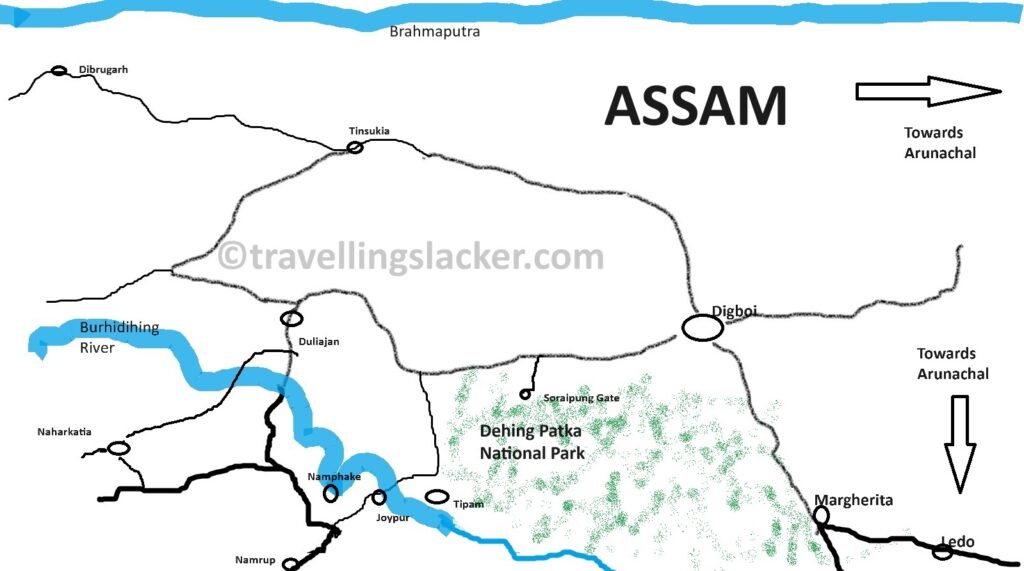
It is located in the northeastern corner of Assam bordering Arunachal Pradesh on the foothills of Patkai hills. The park is a deciduous rainforest with semi-evergreen and lush green flora. It’s made up of Jeypore, Upper Dehing, and Dirok. The Burhiding or Dehing River flows through the forest.
Check the map above to understand the directions. As usual, it is a rough map I made, not up to the scale. It will just help you understand where every town is located.
How to reach Dehing Patkai?
The nearest major airport is Dibrugarh, well connected with the rest of the country.
The nearest major railway station is Tinsukia.
There is a rail station in Digboi too but most trains do not stop here. If you are coming from Guwahati, Ledo Intercity Express (15603) is the only one that will stop at Digboi.
You can get regular buses including comfortable overnight sleeper buses from Guwahati to DIgboi.
Local buses and smaller shared vehicles keep running between these towns in the region.
Dehing Patkai Entry Fee
There is a minimal entry fee for visitors at the gate but if you are taking a camera, you have to pay an additional fee of around INR 400-500
What are the major towns in and around Dehing Patkai?
Dibrugarh and Tinsukia are two big cities in the vicinity while numerous small but prosperous towns like DIgboi, Duliajan, Margherita, Naharkatia, Ledo, and Namrup are located around the peripheries of the forest.
What kind of animals and birds are found here?
There are primates like Assamese macaque, stump-tailed macaque, pig-tailed macaque, rhesus monkey, capped langur, and western hoolock gibbon, wild cats like tiger, leopard, clouded leopard, leopard cat, golden cat, jungle cat, and marbled cat and other mammals like Chinese pangolin, dhole, Himalayan black bear, Malayan sun bear, crab-eating mongoose, small-toothed palm civet, binturong, red serow, slow loris, Himalayan squirrel, Himalayan striped squirrel, Malayan giant squirrel, and Pallas squirrel etc.
You can also expect birds like Lesser Adjutant Stork, White Winged Wood duck, White-backed Vulture, Slender-billed Vulture, White-cheeked Hill Partridge, Khaleej Pheasant, Grey Peacock-Pheasant, Rufus necked Hornbill, Wreathed Hornbill, Great Pied Hornbill, Beautiful Nuthatch, Black-browed Leaf Wabler, Green Imperial Pigeon, Purple wood or Pale capped Pigeon etc.
Reptiles like Rock python, King cobra, Asian leaf turtle, Monitor Lizard etc can also be seen along with scores of butterflies and other insects.
However, do note that sighting is not always easy in such dense rainforests. You need to devote time and effort and need experienced guides with you.
Is it a difficult hike/trek?
Not really. It was mostly a straight walk with some ascending portions. We did 3.5 KMs to and fro. However, it is possible to go further and do a longer hike. Also, there are other more remote and rewarding areas where one can spend days but they are not open for general tourists.
Can we have a jeep or elephant safari?
Not at all. It is a dense rainforest not an open grassland like Kaziranga. So, you’ll have to be ready for the toil.
Where to stay?
There is a government bungalow right at the entrance at Soraipung but a couple of local homestays have also opened up nearby. You can also stay in nearby towns like DIgboi which has several hotels and resorts nowadays.
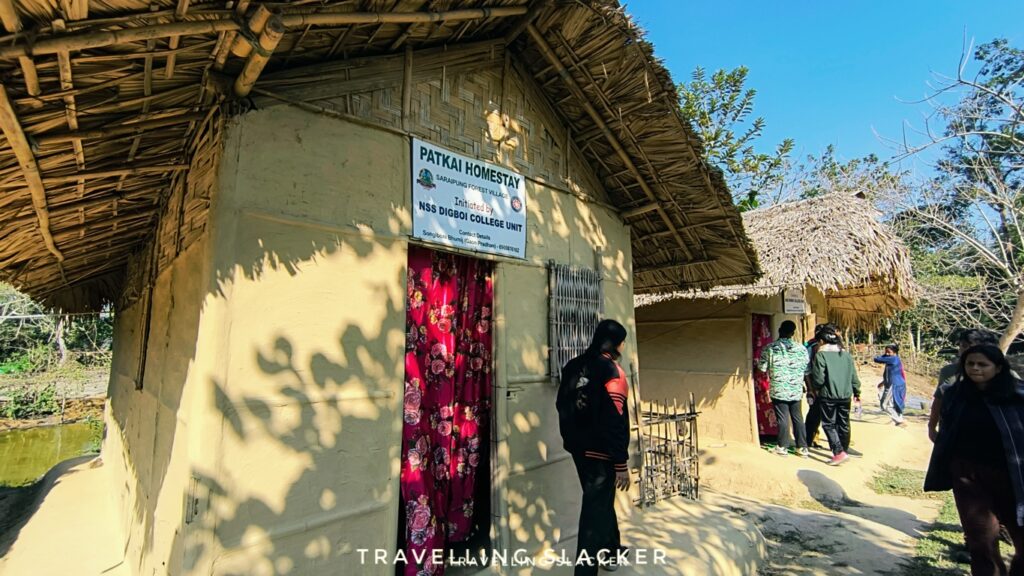
For a budget stay near the entry, you can contact
Patkai Homestay, Soraipung
Songibhoni Bhumij (Caretaker and Owner) +91 69008 76162
INR 1200 per head including food
Rooms with attached western bathroom inside a mudhouse
Who to Contact for visiting Dehing Patkai? Should one inform the authorities beforehand?
I found the following number after some research but I have not tried it. Hope it works.
Divisional Forest Officer, Digboi Division, P.O. Digboi, Pin: 786171, Dist. Tinsukia, Tel.: (03751)264433
What is the best season for visiting Dehing Patkai?
Ideally, just like most parts of India, the birding season in Dehing Patkai National Park is during the winter months of November to early March. The hot and humid summer-monsoon season is usually not very pleasant. Still, the late monsoon and post-monsoon period in August and September can be a good time to spot various types of butterflies if that interests you.
Where to find birding guides for Dehing Patkai?
Contact the authorities as mentioned above, they should help you with the guides too. Arrangements can be made at your entry in Soraipung.
What else to see after Dehing Patkai?
There are a lot of things you can do in this region as explained already. You can also go further and enter Arunachal Pradesh and explore Tirap, Changlang, or Lohit Valley. Here are a few old posts of mine covering nearby regions.
What else to keep in mind?
Always maintain decorum, do not make noise and follow the instructions of local guides and forest guards. Do not go too far ahead or lag behind the group. When you see wild animals, do not panic or irritate them in any manner. Do understand that if something is prohibited inside a jungle, it is for your safety.

